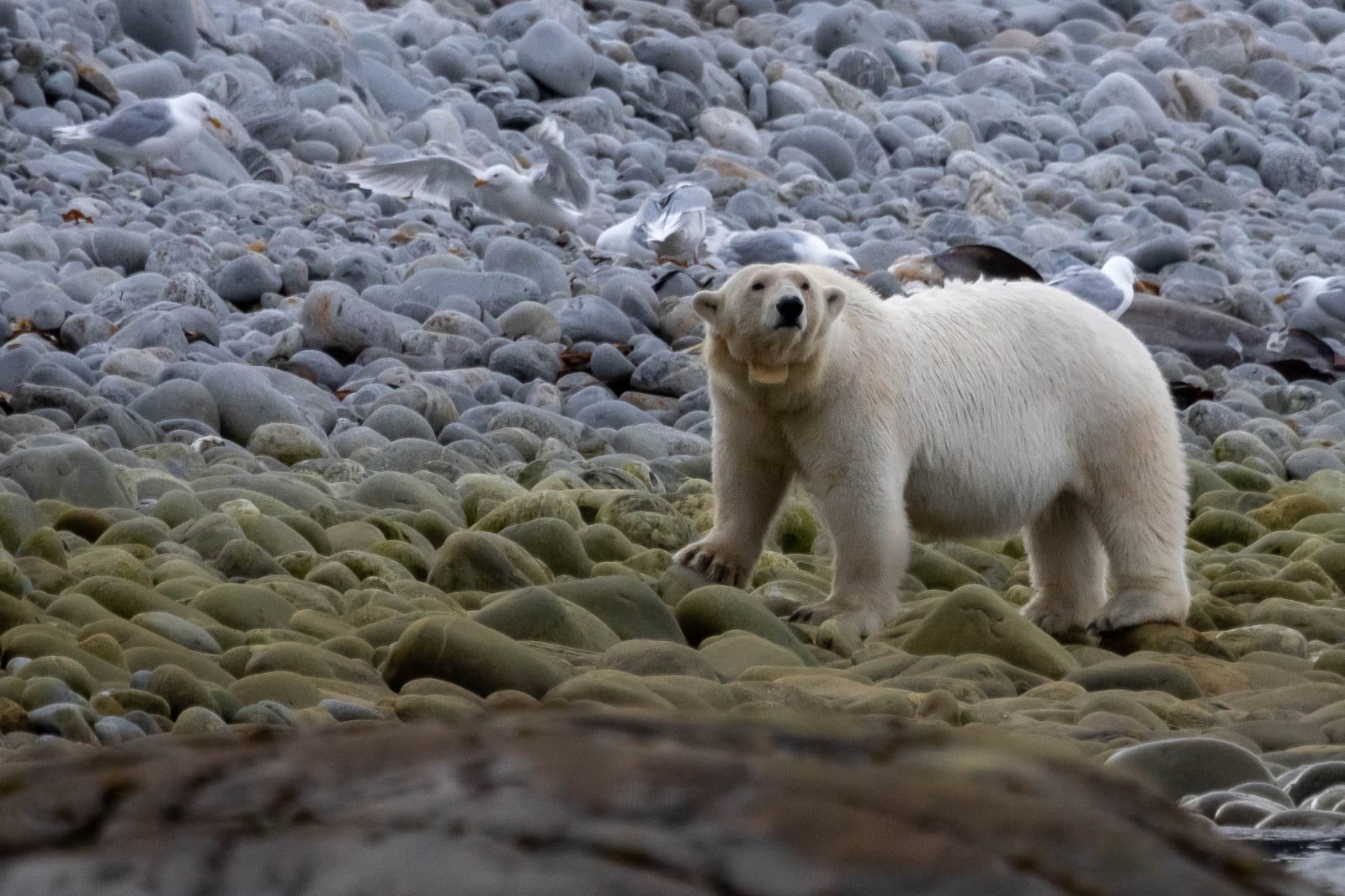A day in the life of an Arctic expedition doctor
The crossing from east Greenland has been tough. The wind has gusted to 30 knots and large swells have rocked the 100m vessel. The passengers are scarce and the dining room appears deserted.
I’ve been scurrying around the cabins dishing out Meclizine, and the tell-tale patch of Scopolamine behind ears is ever present. But respite is on the way and as we cruise into the first deep fjords of the Svalbard archipelago, the wind eases and the sea calms.
Guests are transported in Zodiacs to shore.
As if to welcome us, a crisp vapour plume bellows up from the ocean and then the massive form of the earth’s greatest creature, the blue whale, arches up out of the water.
The spectacle is ethereal, and the whale seems to never cease, but finally a dorsal fin appears and then it dives leaving only a ripple of disturbance. Guests are euphoric, and the chatter at breakfast is excited. We cruise on and gawk at magnificent icy white glaciers that surf down to the sea edge, ending in precipitous ice-blue fronts that occasionally calve off in spectacular thunderous calamity.
“As if to welcome us, a crisp vapour plume bellows up from the ocean and then the massive form of the earth’s greatest creature, the blue whale, arches up out of the water. ”
My radio crackles and I’m summoned to the well-appointed clinic. An upper respiratory virus is doing the rounds, and a steady stream of guests present for throat lozenges and cough syrups.
The nightmare of COVID lingers and the C-word is mute, together with testing, as guests know that a positive result will confine them to five days of solitary in their cabins. At $10,000 for the cruise, no one wants that!
The morning activity is a hike up some moraine slopes. Here, the glacier has scoured and retreated, shrinking away from the ever-warming sun, leaving behind a barrage of debris and ancient rocks.
Guests enjoying the Arctic scenery.
Guests kit up in multiple warm layers, don life vests and shuffle down gangways like inflated Michelins. They climb into patiently waiting and rocking Zodiacs which whizz them to shore. There they are disgorged, and they shuffle up the beach like penguins, weighed down by heavy cameras and long telescopic lenses.
This is an expedition, but the average age is sixty-five and I watch on anxiously as guests select walking poles and puff up the first gentle slopes. They can self-select their walking groups – from ‘chargers’ to ‘leisurely’ – and eventually, rifle-clad guides lead them on up the rocky moraine.
I’ve brought a radio for staff to contact me, and a medical kit to shore. This includes a comprehensive emergency bag containing everything to deal with likely catastrophes – fractured limbs, lacerations, hypothermia and even cardiac arrest. Fortunately, for the most part I’m dishing out Band-Aids for soft blistered feet unaccustomed to the rigours of hiking and waterproof boots.
The scenery is dramatic, with vivid Arctic plants and flowers providing dashes of colour and athletic Arctic terns swooping above. In the distance, stumpy reindeer graze nonchalantly, proudly showing off their stacks of velvet-covered antlers.
Suddenly, my radio bursts into life. “Doc Sandy, Doc Sandy!”
Dr Sandy on a morning hike.
I’m called urgently back to the beach. An 80-year-old lady has tripped on the tricky rocks, falling onto her right side and hitting her head and shoulder. Thankfully, she is alert, orientated and not anticoagulated, but nurses a purple swelling on the side of her scalp. Her shoulder is very tender, she moves poorly, and a dark bruise is already clouding her pale skin.
We assist her to the Zodiac, return her gently to the ship, and X-ray her. Although her shoulder bones seem okay, she has three fractured ribs which worry us. We will need to watch her closely.
The guests return to the ship and are elated following their walks. A massive buffet lunch fills bellies, and many retire to their cabins for a much-needed siesta.
But it is short-lived.
“The polar bear seems completely unfazed by us and continues foraging in a rotten whale carcass. It tears off strips of fetid flesh and protrudes a long black tongue, licking and tugging. ”
Along the narrow fjords, a cream smudge has been spotted by the ever-vigilant expedition guides. The call comes from the public address system: “A polar bear has been spotted at 11 o’clock. Please come out on the port-side deck to see.” There is a scurry of activity and guests swarm out on deck, cameras firing incessantly and massive lenses targeting the unassuming bear.
The polar bear seems completely unfazed by us and continues foraging in a rotten whale carcass. It tears off strips of fetid flesh and protrudes a long black tongue, licking and tugging. The carcass shudders, and the bear’s head is stained rusty brown by fat and sludge from the dead whale. The bear is looking healthy, well-fed with a drooping belly that pays testament to plenty of food.
A polar bear forages.
The guests are beside themselves. This is what they’ve come to see! This is the holy grail of the Arctic. There is jubilation on board, photos are shared, and guests are grinning. The bar opens and cocktails flow.
The evening wrap-up involves a series of short lectures. Tonight, we learn everything about polar bears: how they feed, hunt and reproduce. Their numbers – in Svalbard anyway – seem to be holding out, but one thing is for sure: their icy hunting grounds are receding.
Dinner is a sumptuous affair, à la carte and served with copious bottles of wine. But I abstain, as duty calls.
Expedition staff mingle with guests and hear about bucket lists and requests for walrus and narwhals. Topics like global warning seem moot as we hear about earnest plans to do Antarctica next season, and a myriad of other sought-after destinations that include multiple flights and tonnes of CO2 production.
Sunrise over the ocean.
So another expedition day draws to a close, but not before I see a flurry of cases that include a runny nose, a blistered thumb, burning eyes, and a headache.
I retreat to the stern deck and join other staff in the hot tub. The soft sun hangs suspended above the horizon and casts warm rays on us. We smile and contemplate the beauty of this precious paradise. The colours are sublime, a melange of oranges and purple-pink, and will stay like that for ages as darkness will not come tonight.
I eventually retreat to my cabin. After a last glance out my porthole at the shimmering green ocean speeding by, I fit my eye shield and sink down into my mattress for a dreamless sleep.











